A Brilliant Monster Collecting Game – Dragon Quest Monsters The Dark Prince Review
Dragon Quest Monsters The Dark Prince is the newest game in the Dragon Quest Monsters series. The Monsters subseries is a spinoff of the Dragon Quest games, like how Dragon Quest Builders is another one of Dragon Quest’s spinoffs. The main difference with Monsters is that the player doesn’t do fighting directly. Instead you capture, fuse and raise monsters to do the fighting for you, similar to other monster-collecting games like Pokémon and Digimon.
Dragon Quest 5 is where the idea of monster collecting came from. In Dragon Quest 5 the main story focuses on a hero becoming enslaved and one of the new gameplay mechanics introduced involved recruiting monsters into his party rather than only having human characters. It was a really revolutionary idea at the time that had such popularity the developers used that mechanic to make an entire spinoff series. While Dragon Quest 5 didn’t pioneer the concept of capturing monsters to fight alongside you, its prolific influence profoundly shaped the monster-collecting genre for years to follow.
Dragon Quest Monsters itself has a lot of games. There is Dragon Quest Monsters 1 and 2 and Monsters itself has its own spinoff called Dragon Quest Monsters Joker 1, 2 and 3. It’s similar to how the Shin Megami Tensei (SMT) series has has charts and branches full of spinoffs, such as Persona, Devil Summoner including Soul Hackers and Raidou, Devil Survivor, Demikids/Devil Children and more just to name a few. You definitely don’t have to play all these before The Dark Prince, but if you played any of these before you’ll be able to get into this game more easily because the gameplay mechanics are all pretty similar and carry over through games.
I haven’t played any other Dragon Quest Monsters games, I’ve only played some of the mainline Dragon Quest games. It’s definitely an approachable series. It’s a bit daunting learning all the nuances of the monster raising mechanics. It’s not hard at all but you’ll have a little bit of a learning curve if it’s your first Dragon Quest Monsters but once you understand the basics it’s really not bad.

You can also definitely beat the main story without optimizing your monster builds, you only need to go all-out with monster breeding if you want to beat all of the post-game challenges and arenas (similar to Pokémon’s, where the main story is easy enough but there are more tricky post-game challenges).
I would recommend playing Dragon Quest 4 if possible because this game is an alternate timeline of the events in that game. Playing Dragon Quest 4 is nice to understand the references to characters such as the Hero, the supporting characters, as well as references to locations, many of which are throwbacks to that game but now explorable with 3D graphics. It’s definitely not necessary to play it to understand the plot, it’s just to catch references but the game is certainly enjoyable on its own. .

I’ll provide a synopsis of the first hour of plot. This game’s plot is pretty front-loaded similar to how the movie “Up” is frontloaded and although I’m summarizing a lot of events, it all happens within just the first ten minutes of starting a new game.
You play as Psaro, the villain from Dragon Quest 4. He’s a half human and half demon who is the son of the demon king. His dad abandoned him and his mother when he was young. Psaro tries to live as a human, but they find out who he is and kick them out. The stress causes Psaro’s mother to pass away.

Psaro becomes furious and wants revenge on his dad, but when he confronts his dad he becomes afflicted with a curse that prevents him from harming monsters, forcing him to recruit monsters to use them to hurt monsters.
The plotline of a mixed protagonist is actually similar to one of the character’s plotlines in the Dragon Quest Dai anime which I’d recommend watching if you want to immerse yourself in Dragon Quest content.
The first 10 minutes of this title is basically a cataclysm of depressing events. Psaro eventually finds a village of dwarves, and one man named Monty teaches Psaro how to recruit and raise monsters, allowing Psaro to become a monster wrangler.
The cutscenes feature on-screen 3D models rather than 2D character portraits. The game includes a fully voiced English dub done with British accents, a characteristic shared with many Dragon Quest games. This dubbing style is quite similar to the recent dubs in Xenoblade Chronicles. The dub can be perceived as cheesy at times, and some characters can be hit or miss with the voice acting, but it’s generally a good sub that is unique. If you’ve played Matsuno’s game’s such as Tactics Ogre, Final Fantasy Tactics and Final Fantasy 12 they also have a similar dubbing style. The inclusion of the English dub is particularly noteworthy, given that many publishers tend to forgo English dubs entirely nowadays. Although Dragon Quest is a big series, this game is only a spinoff, so I felt that having a voiced English dub was a welcome surprise.
If you played mainline Dragon Quest games, you’ll generally play as a Hero character. But in Monsters, you instead play as a mysterious character who exudes an air of evil, which I found to be an enjoyable twist because Psaro is very morally ambiguous at times. The supporting characters are mostly non-human such as monsters and elves, and they have great banter with a fun dynamic that’s surprisingly different from the mainline Dragon Quest games that have a straight man protagonist.


One of my criticisms is that decisions hold no significance. The decisions do a great job of looking important, but they’re not important at all and the game will railroad you in whatever direction it wants.
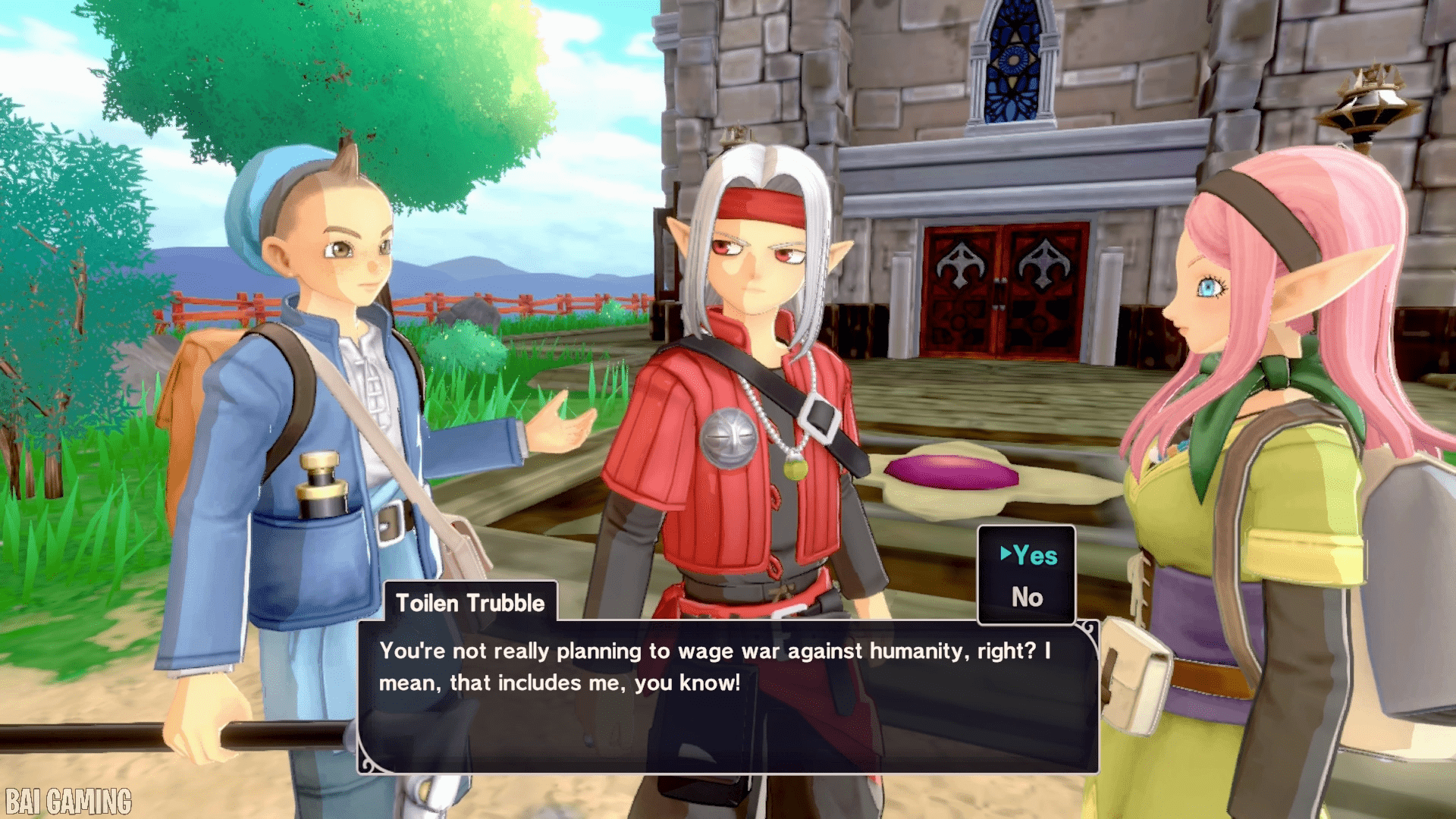
There’s one choice in the game I won’t spoil where you’re clearly getting into a trap, and even if you detect it’s a trap the game forces you to go into it. As with other Dragon Quest games, the protagonist does not have dialog. This is usually how Dragon quests are though but if you’re not familiar with these games it can be off-putting.
The gameplay in this game is extremely fun. The monster-collecting concept is great. You encounter enemies on a map. You fight them, and you can scout them in battle to recruit them. I won’t go into all the mechanics, but in general if you have higher leveled monsters in your party you’ll have an easier time recruiting on-screen monsters.

There are other ways to recruit more easily such as if the enemy has a status effect or lower health points. Unlike Pokémon you don’t need Pokéballs. If you also complete the story events in a region it gives you a reputation bonus, allowing you to recruit monsters more easily. You can also recruit monsters if you defeat them because there’s a chance of them asking to join you after you defeat them, but it’s not too common.
If you have too many monsters in your party at once, you can take new recruits back to the Paddock, essentially a farm where you live. You can also unlock fusing your monsters together from story progression. Fusion will make you lose the two monsters used but you’ll get a more powerful one in exchange. Your monsters will have skill trees, which include skills unique to the monster as well as learnable skills and inherited skills from the monsters you used in the fusion.
You gain experience from defeating enemies and you can level up and earn learning points to spend on skills. It pretty much is the fusion system of SMT and you can have so much fun just fusing and building your monsters and their skills the way you want. There are some insane fusions in this game and some are extremely specific. A few fusions require certain grandparents, meaning fusions are affected through multiple fusion generations.
The designs of the characters and monsters are by Akira Toriyama, best known as the creator of Dragon Ball. The humans sometimes do have very similar looking faces, but the monster designs are really interesting and many are unique.
The music is composed by Koichi Sugiyama. It’s tough to put into words, but Sugiyama is known for his ability to compose memorable tunes. The music he creates for Dragon Quest games often features catchy melodies that stick with you long after you’ve finished playing. Unfortunately, Sugiyama passed away during the production of Dark Prince, meaning most of the music in Dark Prince is recycled from older Dragon Quest titles. The soundtrack still sounds amazing though as with all Dragon Quest games.
Although this game presents a really interesting story, it’s not like a triple A video game story, and the story is awkwardly explained at certain parts with a lot of time-skips all over. The plot isn’t really the strong point of this game, it’s really more about the gameplay and having fun collecting monsters. Don’t get me wrong, this game definitely has a main story and a plot, and it’s more substantial than Pokémon plots. I’m not necessarily comparing the plots of Pokémon and this title because I understand they’re achieving different goals, but if you do want a JRPG plot where you save (or destroy?) the world then this game is up your alley. The Monsters spinoffs almost remind me of Disgaea games in this sense.
The gameplay is outstanding, featuring an impressive array of Dragon Quest monsters. There’s over 500 monsters in this game alone. It’s true many of these are just palette swaps, but the palette swaps aren’t that bad. Usually monsters will have stronger tiers of themselves, usually just 2 or 3 per monster design.
The gameplay is really fun. This is a game where strategy can help you a lot, such as using buff and debuff spells. I couldn’t find a difficulty option in this game, meaning this game has one set difficulty you need to beat it on and some bosses are definitely difficulty spikes especially in the later regions. You need to know what you’re doing, but it’s never overly hard as long as you do due diligence.

The game features two arenas where you fight humans (or monsters) controlling monsters. You can’t recruit monsters in the arenas, you can only fight in the arenas and you have to let your monsters fight without specific orders. You can assign general tactics in the arena, which have options such as “fight using all your power” or “heal hurt allies”. Most of the game is thankfully not like this and you’ll be able to issue exact orders normally outside the arena. I don’t necessarily agree with this mentality because there are many post-game challenge arenas that are tough and I really would’ve preferred being able to issue orders to my monsters.

The spell system of Dragon Quest is interesting. If this is your first Dragon Quest you do need to learn the language of the spells (like how Persona and SMT have their own spell nomenclature), but it’s not hard to learn at all. Like Sizz is a basic fire spell that hits one enemy, Sizzle is fire onto a group of enemies, Kasizz is the higher tier of fire spell onto one enemy, Kasizzle is a higher tier fire spell that hits a group, and such. The ailment healing spells sometimes have funny names, such as Squelch healing poison, but it’s not tough to learn at all. If you’re playing a different language localization I heard that the spell names may be different and non-standardized so be aware of that.
I found that I had to progress in the arena near the beginning of the game in order to advance the story, but after a certain point the game stops forcing you to do the arena. I found the beginning of the game to be somewhat of a slog due to the mandatory arena battles because you still lacked tools to make a good build and there weren’t many recruitable monsters early-game.
You start off at the G rank in the arena and you just have to do up to the D rank to be able to beat the main story. I found the second arena fight (F rank) was annoying because I only had one region to explore and I had to grind there to beat it, and because you didn’t unlock tools such as fusion and also can’t properly issue orders in the arena made it tricky for me. After that rank is achieved you’re able to unlock new areas that were much easier to beat and you could recruit a much wider variety of monsters to help you progress. The arena is an enjoyable challenge once you have your bearings. There are two arenas, one for humans and one for monsters, and each go from rank G to ranks A, S, and even X which are post-game challenges.
The level designs are very distinct and unique, with each area featuring its own subplot. Each location is structured into upper, middle, and lower sections, and these become accessible as you advance in the game. The game has an order for the levels early on and for certain story scenes, but most of the game is a non-linear experience, allowing you to tackle them in any order. Crucial story scenes will play out after you complete each level zone or two.

You have regions that are of many distinct biomes, from lava caves, dark castles, candy levels, a factory world, a roman bathhouse, and more. The puzzles are really great in the levels too. They’re not hard but they’re not boring either. There’s one where the level is a cave where you need to progress upwards, and you have to rotate a central pillar every level to make full paths to walk across. The candy level was fun to explore because you hit switches to make either small or giant flans, and you bounce on them. Depending on the flans’ sizes you can reach upper or lower regions. When you hop on a flan you need to hop on all of them in a straight line, meaning you need to plan your jumps carefully. It makes for really good puzzle design that has elements of verticality that a lot of JRPGs lack.
The factory world has conveyer belts you’re forced across, but you can flip the directions of some of the belts at certain switches. And the roman bath level was my favorite, where you would turn aqueducts in different directions to direct water flow. You have to actually direct the flow of water away at first to drain the bottom area, so you can go into the valves located at the bottom region, then you go back to the earlier area to direct the water into it. When you direct all the water together it raises platforms for you to cross over a gap.
Dragon Quest has always had great dungeon design and this game is no exception. These kinds of dungeons are a lot better than procedurally generated content. It actually feels hand crafted which is a rarity nowadays where many other game developers just slap assets into an open world. There are open world regions in Dragon Quest Monsters: The Dark Prince as well, but I’m happy there are also many dungeons in the regions required for the story, whereas with contemporizes such as SMT V there’s a distinct lack of explorable dungeons and the dungeons that do exist are pretty bland.
The NPCs in the game are intriguing, with most of them being non-humans and monsters. I always enjoy exploring monster towns, I feel that most JRPGs don’t do a good job with monster towns. I really laughed at the interactions with the monster NPCs and the puns the monsters make are cheesy, but still funny. One example is when you recruit a skeleton she tells you it’s okay to work her “to the bone”.

The additional content after completing the game features even more scenes, with fully explorable levels and they still have complete voice acting in all the scenes. The bosses are even tougher in the post-game, but not too difficult. The postgame is a really nice touch since games nowadays barely have postgame content.
I didn’t like the mole hole DLC. This game has no compendium to purchase previously recruited monsters, so you need to go back into regions to recruit more monsters if you fused them away. I don’t mind this at all. But there was a DLC called the mole cave allowing you to go into a tiny cave with all the monsters you previously found. I feel that this should’ve been included in the base game or not included at all. It’s an extremely powerful tool because you can just unlock a powerful monster such as a metal slime, then you keep re-recruiting it to make powerful monsters. Why do you have to pay for a DLC that should’ve just been included in the game? This would be analogous to being forced to buy a DLC to use SMT’s demon compendium, which lets you re-purchased demons you recruited previously.
The Nintendo Switch had poor performance for this game and that’s the only platform it’s available on. It’s a shame because the levels are so pleasant, with seasons constantly changing and affecting the level areas, but performance becomes severely compromised as a result. The candy level has confetti storms that randomly happen but the performance gets so choppy.
I made a few criticisms, but Dragon Quest Monsters The Dark Prince is a really fun game. It’s an addicting monster collecting game and the story is not bad at all. The gameplay is fun, I personally like it even more than Pokémon and it’s so much fun fusing monsters and making builds for them. The arena matches get pretty tough and it’s fun optimizing your team’s stats and moveset. The levels are rather pleasing to look at and explore while capturing more monsters. I liked revisiting the world of Dragon Quest 4, and I really liked learning more about the monsters in Dragon Quest. It’s similar to how SMT uses its same demons in all of its spinoffs such as Persona, in Dragon Quest they’re re-using all of the monsters and bosses I fought in the mainline games and it’s a really great way of re-using content in a novel way. The soundtrack is phenomenal and the English dub is hilarious, but in a good way. It’s fun capturing, breeding and raising your monsters. It’s a really addicting formula even if it’s not the highest budget game. If you’re looking for a monster collecting game that’s something other than Pokémon, Digimon, or SMT, this is definitely your best bet.
Dragon Quest Monsters: The Dark Prince
 Our Score: Good
Our Score: Good
Pros
- There are over 500 monsters to collect. There are many kinds of skill trees and skill inheritance rules, allowing you to make any monster build you want.
- The story is interesting and has many references to Dragon Quest 4. The protagonist being a villain of the mainline series is also interesting.
- The distinct levels are very fun to explore while you catch monsters and the level puzzles are very well-designed.
- Although the monster designs are amazing, the graphics can be underwhelming at times.
- It’s fun to play the game on the go on the Nintendo Switch, but the performance of the game can be very choppy at times, especially during seasonal changes in the levels.
- The game can get repetitive and grindy at times. There are many regions with sharp difficulty spikes as well.
– Brandon Harris
Reviewed on the Nintendo Switch
Recent Posts



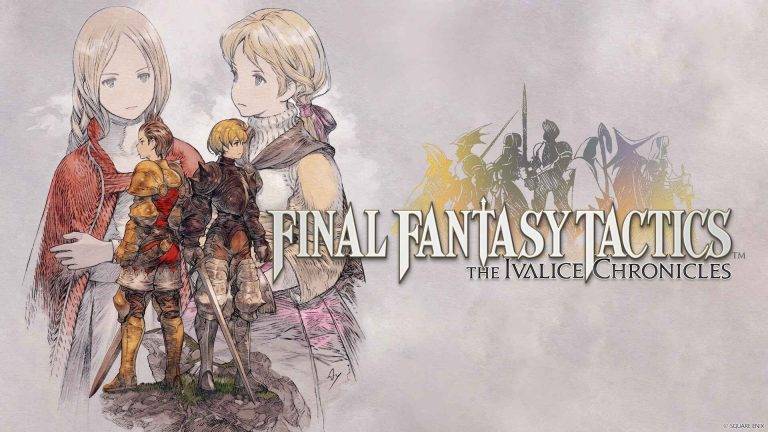
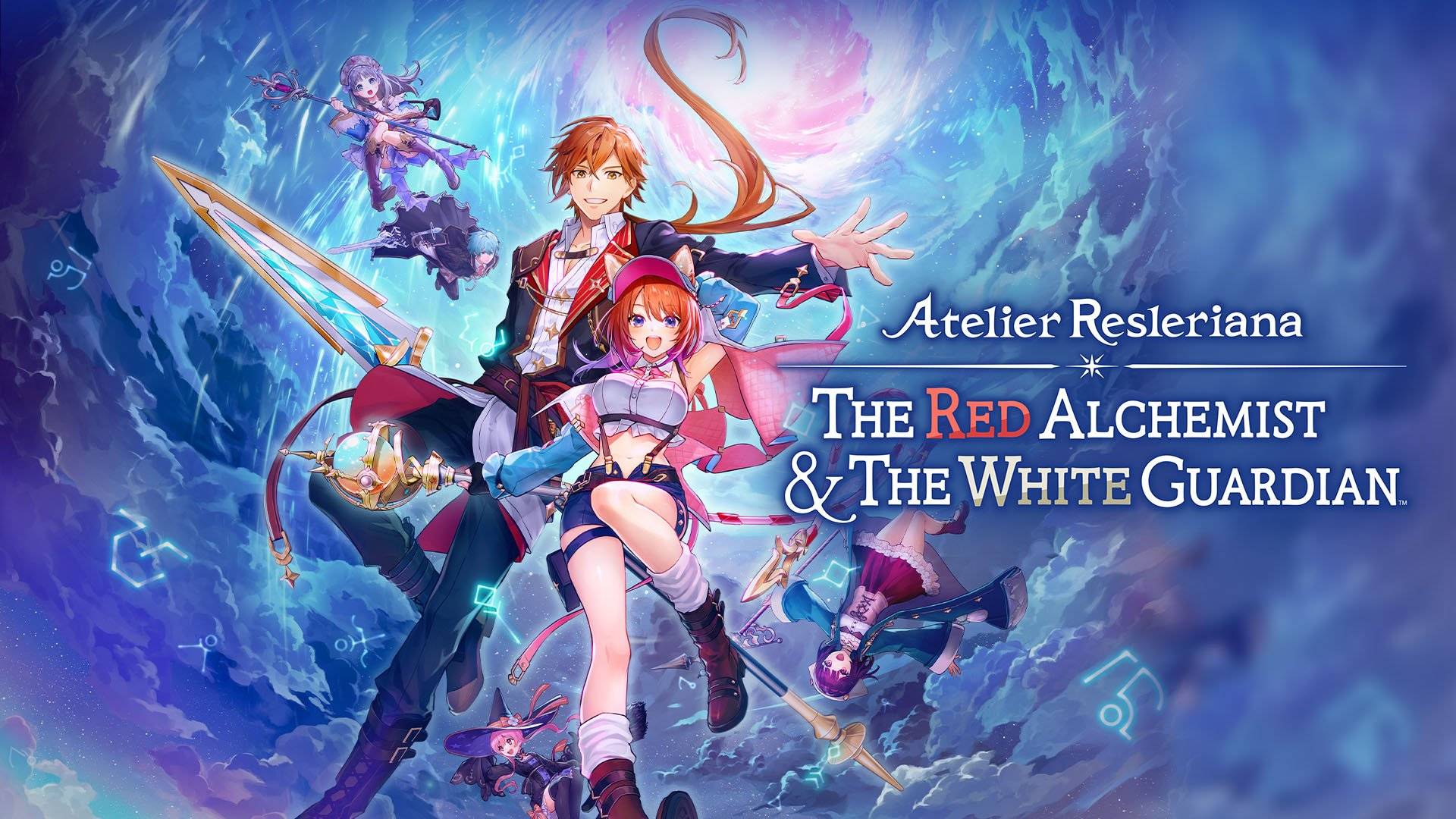
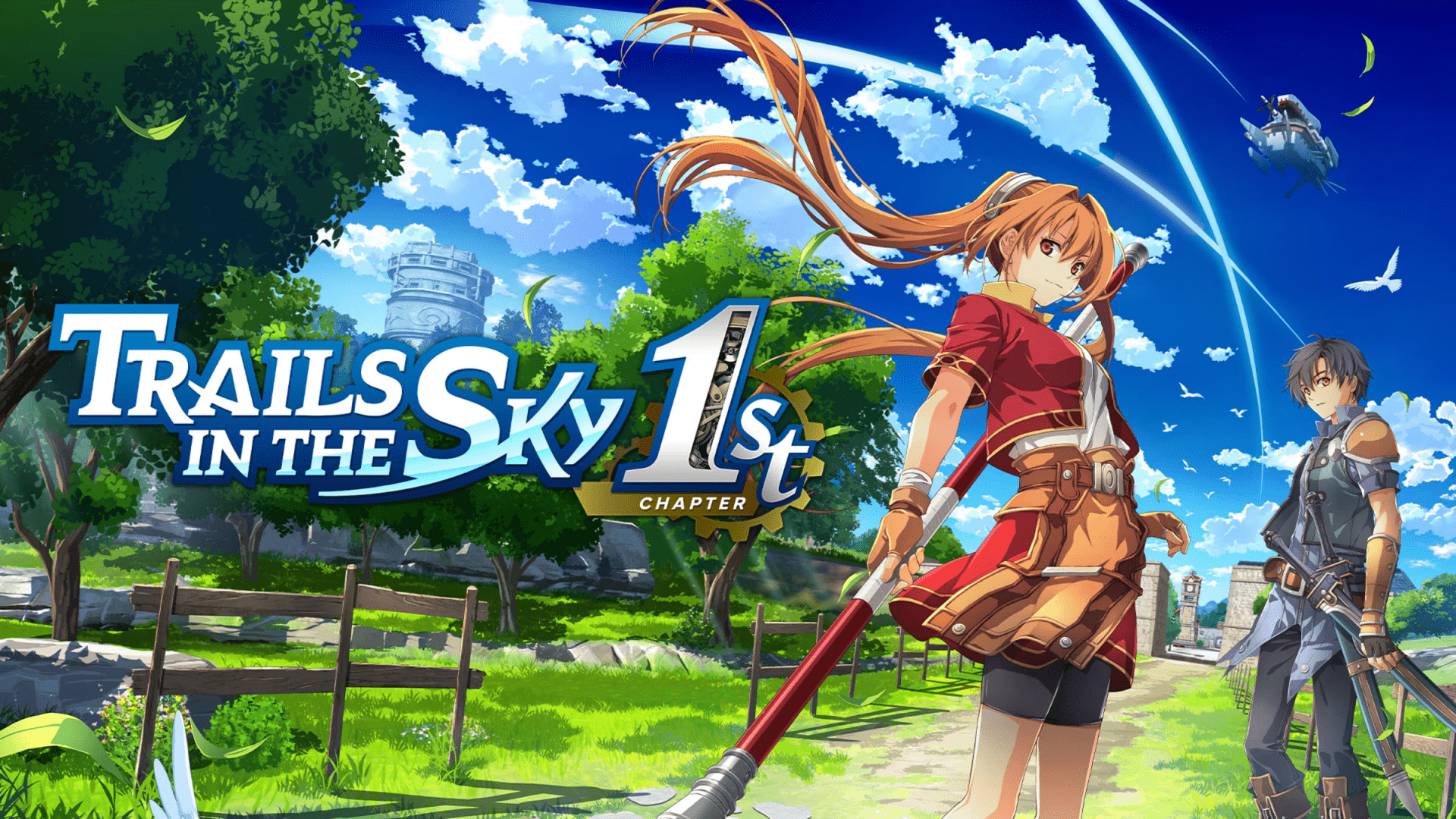
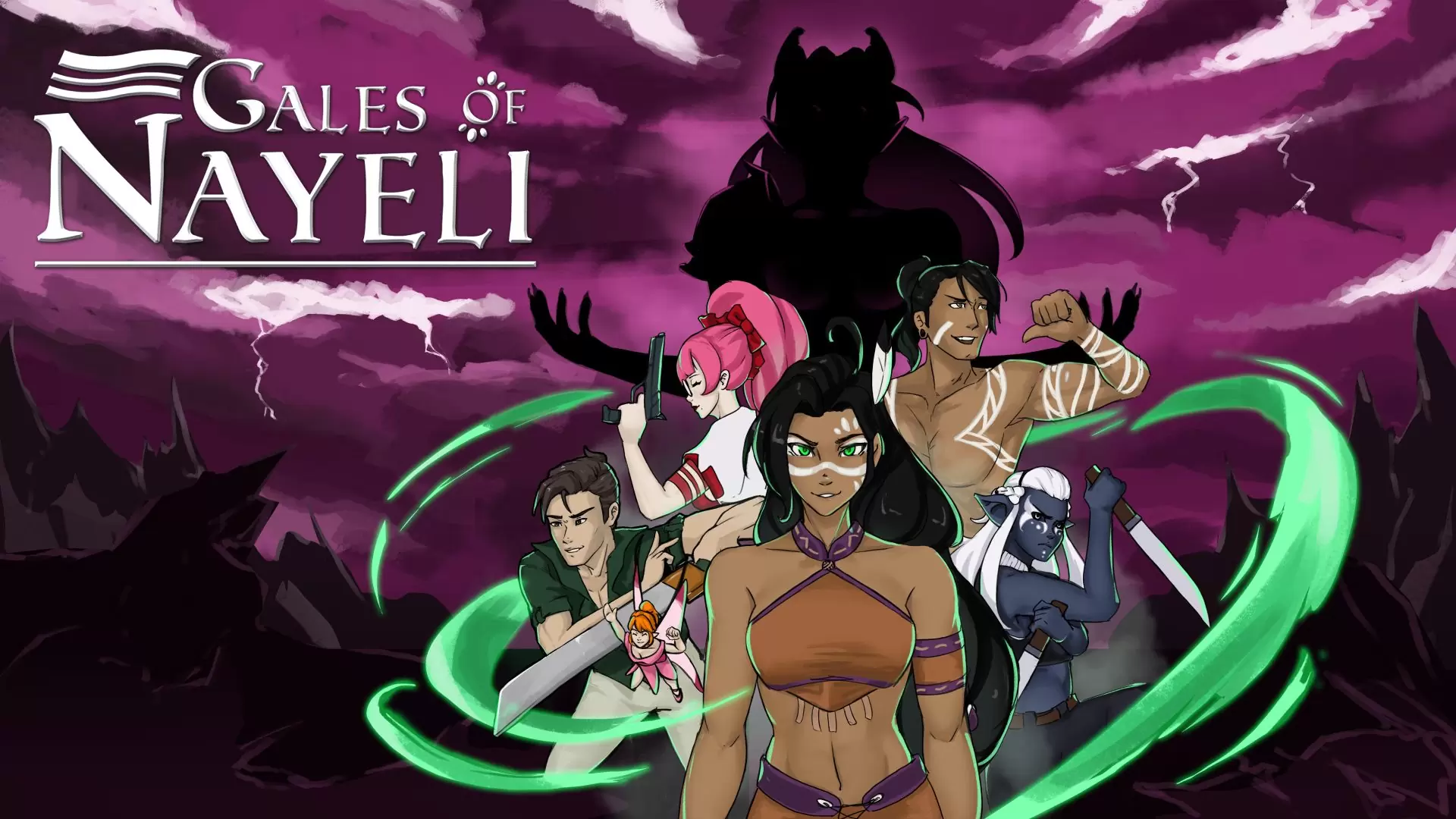
Dragon Quest Monsters is amazing, i love the monster catching gameplay mechanics similar in comparison with Pokemon. You can certainly tell the love and passion put into the game.